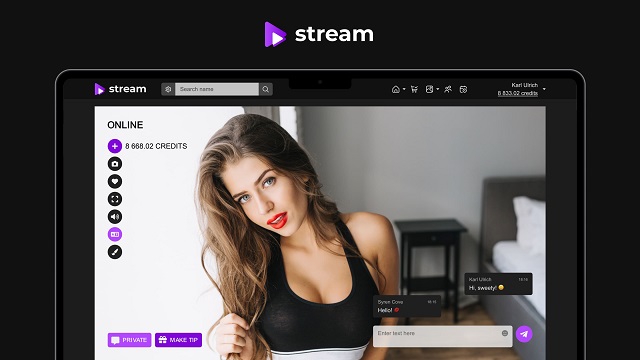Live streaming isn’t limited to one industry or audience anymore. It’s used by everyone — from teachers running virtual classrooms, influencers hosting fan events, and content creators launching pay-per-minute shows, to large-scale streaming services and global tech companies powering massive live broadcasts. The demand for real-time connection is universal, and behind many of these experiences, one protocol quietly continues to do the work: RTMP.
So, what is RTMP protocol, and why is it still trusted in 2025?
Despite its age, RTMP remains a go-to method for getting video from source to server — fast, stable, and widely supported. In this guide, we’ll unpack how it works, where it fits in today’s tech landscape, and how you can use it to build your own streaming platform — whether you’re launching a niche startup or architecting a large-scale service.
RTMP Demystified: What It Does and How It Works
RTMP stands for Real-Time Messaging Protocol, and while it’s an oldie, it remains one of the most reliable building blocks in live video workflows. Macromedia developed RTMP in the early 2000s to stream audio, video, and data over the internet, and Adobe later adopted it. The protocol primarily served Flash-based playback. While Flash itself is no more, the protocol it used isn’t.
What keeps RTMP relevant in 2025 isn’t nostalgia. It’s usefulness. RTMP creates a long-duration TCP connection between the source (usually a live encoder) and the server. That is, rather than pushing bits of data, as more modern HTTP-based protocols do, RTMP has a steady, low-latency stream of information. It’s a continuous feed that works particularly well when timing matters — like live events, real-time interaction, or performance-based content.
RTMP’s Role in the Contribution Workflow
Most of the time, platforms used RTMP at the contribution stage to transfer content from the broadcaster to an RTMP streaming server.From there, other technologies (like HLS or WebRTC) typically take over to deliver the content to end viewers. RTMP still dominates this ingest phase because it’s fast, reliable, and widely supported across encoders like OBS, vMix, Wirecast, and even hardware streaming tools.
Here’s how a simple RTMP stream setup looks:
- A live camera feed is captured through an encoder
- The encoder pushes that stream using RTMP to a streaming server
- The server then handles playback distribution using HLS, WebRTC, or both
Another reason RTMP persists is how well it performs under poor network conditions. It’s not the most modern option, but it’s incredibly stable and easy to deploy — two traits that matter a lot when you’re dealing with unpredictable connections or limited budgets.
Of course, not everything about the original protocol fits today’s standards. That’s where RTMPS comes in. If you’re wondering what is RTMPS, it’s simply RTMP secured through SSL/TLS encryption. The encrypted variant is especially useful for platforms handling sensitive data, adult content, or private pay-per-view events. It ensures your stream can’t be easily intercepted or hijacked mid-transmission.
Maybe it’s no longer the technology powering your playback, but it’s still the protocol quietly handling the heavy lifting when your content first leaves the source — and for many streamers, that’s the most critical moment.
RTMP in 2025: Still Relevant or Outdated?

Developers designed RTMP long before smartphones and 5G entered the picture, but it’s still widely used. While it might seem outdated compared to newer streaming protocols, the RTMP protocol continues to play a vital role in modern live video workflows. It remains especially popular for getting a live video feed from the source — your encoder — to the server before it’s sent to the audience.
One reason it’s still around is that it just works. RTMP has stood the test of time because it’s:
- Easy to implement and well-documented
- Low-latency, with faster delivery than chunk-based protocols
- Supported by nearly every software and hardware encoder on the market
These strengths make RTMP the go-to solution for the “contribution” part of streaming — that is, the link between your broadcasting software and the server. From there, many setups now use a second protocol like HLS or WebRTC to handle playback, especially for mobile and browser-based viewers. This hybrid setup — RTMP in, modern protocol out — has become standard practice.
In 2025, streamers and developers still choose RTMP because it’s stable, flexible, and proven. It’s widely used in live cam platforms, coaching businesses, private membership-based streaming services, and even large-scale commercial platforms that want fast deployment and full control.
At the same time, infrastructure around RTMP is still evolving. Services like RTMP.pro now offer cloud-based RTMP ingestion, making it easier to build a modern workflow without sacrificing speed or reliability.
RTMP might not be the headline tech anymore, but it hasn’t gone away. For many use cases, it’s still the simplest and most dependable way to deliver real-time video from source to server — and that’s exactly what most streaming businesses need.
RTMP VS Other Protocols: Picking the Right Tool

When it comes to live streaming protocols, there’s no one-size-fits-all solution. Each has strengths and trade-offs, and choosing the right one depends on how you’re using it — whether you’re delivering to a global audience, operating a pay-per-minute cam site, or building a high-interaction virtual event platform.
Let’s break down how the RTMP protocol compares to three other common options: HLS, RTSP, and WebRTC.
RTMP VS HLS
This is one of the most common comparisons, especially for developers working on full-scale streaming platforms. The key difference? Many streaming workflows rely on RTMP for contribution, while HLS handles playback
RTMP sends video from the encoder to the media server. It keeps a persistent connection, which means low latency — often under 5 seconds, and in ideal setups, even lower. It is therefore an excellent choice for anything that involves real-time interaction, like live auctions, adult content streaming, or live chat-supported coach sites.
However, Apple developed HLS (HTTP Live Streaming) specifically to support scalable video delivery. It breaks up video into tiny pieces and sends them as HTTP, allowing for easy caching, worldwide distribution, and playing on nearly any device or browser. But it costs more in terms of latency: delays of 15–30 seconds are typical.
So comparing RTMP vs HLS, the rule is simple: utilize RTMP to feed content into the system in a hurry; utilize HLS to publish it in scale. Both are utilized by a lot of current streaming setups, which blend RTMP ingest with HLS delivery to strike a balance between real-time creation and level delivery.
RTMP VS RTSP
Another common comparison is RTMP vs RTSP. While they might sound similar, they’re built for very different things.
RTSP (Real Time Streaming Protocol) is often used in closed environments, like security camera systems, IP surveillance setups, or internal network video feeds. It supports real-time control — play, pause, record — which makes it great for video-on-demand or camera monitoring systems.
RTMP, in contrast, is more focused on delivering live video for web applications. It works better in browsers, integrates more easily with common encoders and CDNs, and is widely supported by public-facing streaming services. It’s also better suited to interactive live content, like virtual performances or monetized live chats.
So if you’re building a consumer-facing streaming site, RTMP protocol is generally the better choice. RTSP is fine for internal systems, but it’s rarely used in public streaming environments without complex configuration and support layers.
RTMP VS WebRTC.
WebRTC is the newest of the major streaming protocols and was designed for true real-time communication. It’s peer-to-peer, supports two-way audio and video, and delivers sub-second latency. On paper, it sounds like the perfect solution for any kind of live interaction.
But it comes with its own set of challenges. WebRTC is far more complex to implement and harder to scale without dedicated media servers. It also requires more resources from both the server and the viewer’s device. This makes it ideal for video conferencing or one-on-one chat, but not always the best choice for large public broadcasts.
RTMP, on the other hand, is easy to configure, works well with existing encoders, and can be scaled up using traditional media server setups. That’s why many developers don’t pick one — they combine both. RTMP handles content ingestion, and WebRTC delivers the final stream to users where latency needs to be as close to real-time as possible.
So RTMP is stable and easy to use. WebRTC is faster, but harder to manage. Use them together when your platform needs both simplicity and speed.
Who’s Still Using RTMP?

Despite being more than two decades old, the RTMP protocol continues to be part of the modern streaming stack — especially when it comes to contribution workflows. While newer protocols like HLS and WebRTC have taken over playback, RTMP still plays a critical role in getting content from creators to servers efficiently and reliably.
It’s not just legacy broadcasters keeping it alive. A wide range of industries and businesses continue to rely on RTMP in 2025 — from small startups to global-scale streaming platforms.
Most common use cases:
- Virtual event platforms. Companies hosting conferences, expos, or panel-style events often use RTMP for stable, scalable stream contribution before handing off to a CDN for global playback
- E-learning platforms. Schools, tutors, and educational creators use RTMP to feed live classroom sessions into learning management systems or interactive content portals
- Live music and entertainment. Small to mid-sized artists stream performances to fans via RTMP workflows, sometimes blending with HLS or WebRTC depending on viewer needs
- Gaming and esports. Niche platforms outside of Twitch often build on RTMP for broadcasting and commentary streaming setups
- Fitness and wellness sessions. Real-time yoga, personal training, or guided meditation classes often rely on RTMP to push high-quality video to their branded websites
- Corporate communications. Internal all-hands meetings or product launches can stream through private RTMP-based networks, bypassing public platforms for security
- Faith-based streaming. Churches, mosques, and spiritual communities use RTMP to broadcast services reliably without relying on external streaming apps
- Niche media hubs. Independent film festivals, regional news outlets, or cultural broadcasts often need fast, cost-effective streaming infrastructure
- Adult webcam sites. These platforms prioritize low latency and performance consistency, especially for private and group video chats. RTMP remains the protocol of choice for many cam businesses because it integrates smoothly with real-time chat and monetization features, without the overhead of more complex options.
For many of these use cases, understanding what is RTMP protocol helps explain why it remains the preferred choice when setting up stable, scalable live video systems. Whether you’re working with a global audience or a private subscriber base, RTMP offers the kind of stability and ease that still makes sense in 2025.
How to Set Up a Streaming Site with RTMP
If you’re planning to build your own streaming site — whether for gaming, coaching, events, or adult content — understanding how RTMP fits into the setup is essential. Even with all the newer protocols on the market, RTMP remains the fastest and most reliable way to get live video from your source to your server.
At a basic level, every RTMP-powered stream follows this path: Encoder → RTMP server → Viewer. The encoder captures and compresses your video. The RTMP server receives and distributes it. And the viewer accesses the stream through a compatible player — often using another protocol like HLS or WebRTC for playback.
To get started, you’ll need three core components:
- A live encoder (OBS Studio is the most popular RTMP streaming software and it’s free)
- A media server that supports RTMP (you can build one using the NGINX RTMP module or go with a hosted solution like Wowza or Nimble)
- A frontend player for your users, often embedded on your site via HTML5 with protocol fallback support
Setting up
When you understand what is rtmp protocol, setting up that flow becomes far less intimidating — it’s all about pushing content in and letting other tools handle the output. For site owners and creators, this setup is a smart entry point. It’s relatively inexpensive, the tech is mature and stable, and there’s a massive ecosystem of plugins, tutorials, and open-source tools to help you launch faster. Unlike more complex real-time protocols, RTMP doesn’t require specialized hardware or deep networking knowledge to configure.
Some tips for getting started:
- Start with a test stream using OBS to a local or cloud-based RTMP streaming server
- Use a player that supports multiple protocols so you can serve viewers using HLS or WebRTC while still relying on RTMP for contribution
- Monitor stream quality closely — especially audio sync and latency — during early tests
- Keep bandwidth and server specs in mind; your ingest server needs enough resources to handle incoming video without lag
RTMP might not be your end-to-end solution, but as the core of your live video pipeline, it remains a powerful and proven way to get a streaming platform up and running.
Why Scrile Stream Is Ideal for RTMP-Based Streaming Sites

When building a live streaming business, the biggest challenge isn’t just getting video online — it’s creating a platform that reflects your goals, brand, and audience. That’s exactly where Scrile Stream stands out. It’s not a generic SaaS product or limited turnkey platform. Scrile Stream is a custom development service built to help you launch a fully branded, fully owned live streaming site — with RTMP integration at its core.
Unlike pre-packaged tools that box you into templates, Scrile Stream gives you complete flexibility. Whether you’re planning a pay-per-view concert site, a high-end private coaching platform, or a full-featured adult cam business, it’s built around your specific needs.
Scrile Stream includes:
- Live video functionality with support for RTMP streaming server input
- Real-time chat systems for audience interaction and private messaging
- Flexible monetization features: tips, subscriptions, pay-per-minute video, and premium galleries
- Full white-label branding, from logo and colors to custom domain integration
- An admin dashboard for managing users, content, and revenue in one place
RTMP remains one of the best options for ingesting live content — and Scrile Stream is built to support that. You can use any RTMP streaming software to send your stream to the platform. From there, Scrile Stream handles everything else: content delivery, viewer access, payments, and real-time features.
You also get the freedom to scale. Start lean, then add custom features or integrations as your business grows — payment gateways, affiliate systems, mobile optimization, or anything else your audience needs.
If you’re serious about building a professional streaming site from scratch — with full control over how it looks, works, and earns — Scrile Stream gives you the foundation, tools, and development muscle to make it real. RTMP gets the content in; Scrile Stream helps turn that content into a business.
Conclusion
RTMP remains a reliable backbone for streaming input — fast, stable, and widely supported. It’s still the go-to for creators who want to build and own their platform. Ready to turn live video into a real business? If you’re still asking what is RTMP protocol and whether it belongs in your stack, the answer is yes — especially if you’re planning to own your platform end-to-end. Contact the Scrile Stream team and start building something that goes beyond just broadcasting.

Polina Yan is a Technical Writer and Product Marketing Manager, specializing in helping creators launch personalized content monetization platforms. With over five years of experience writing and promoting content, Polina covers topics such as content monetization, social media strategies, digital marketing, and online business in adult industry. Her work empowers online entrepreneurs and creators to navigate the digital world with confidence and achieve their goals.

